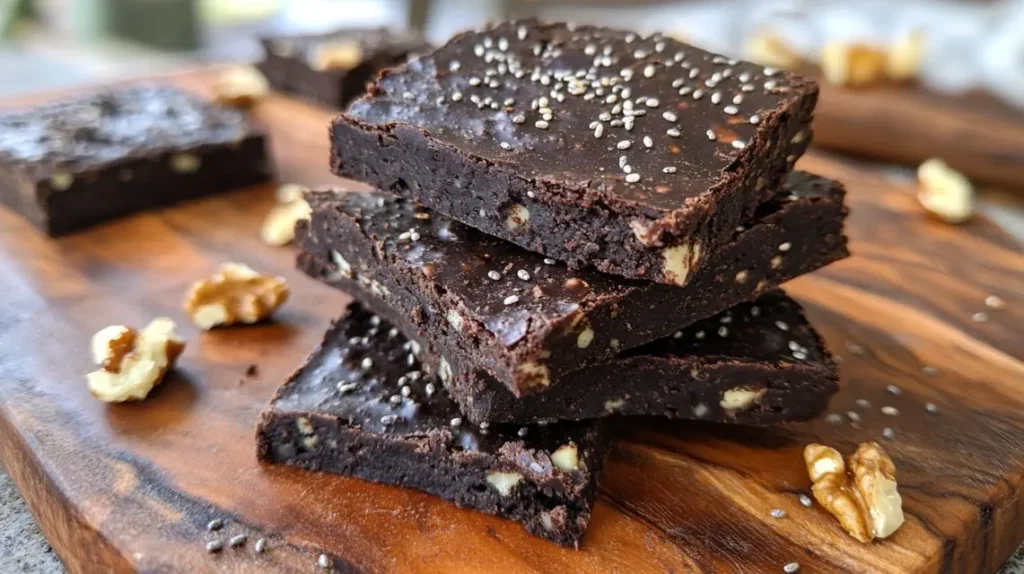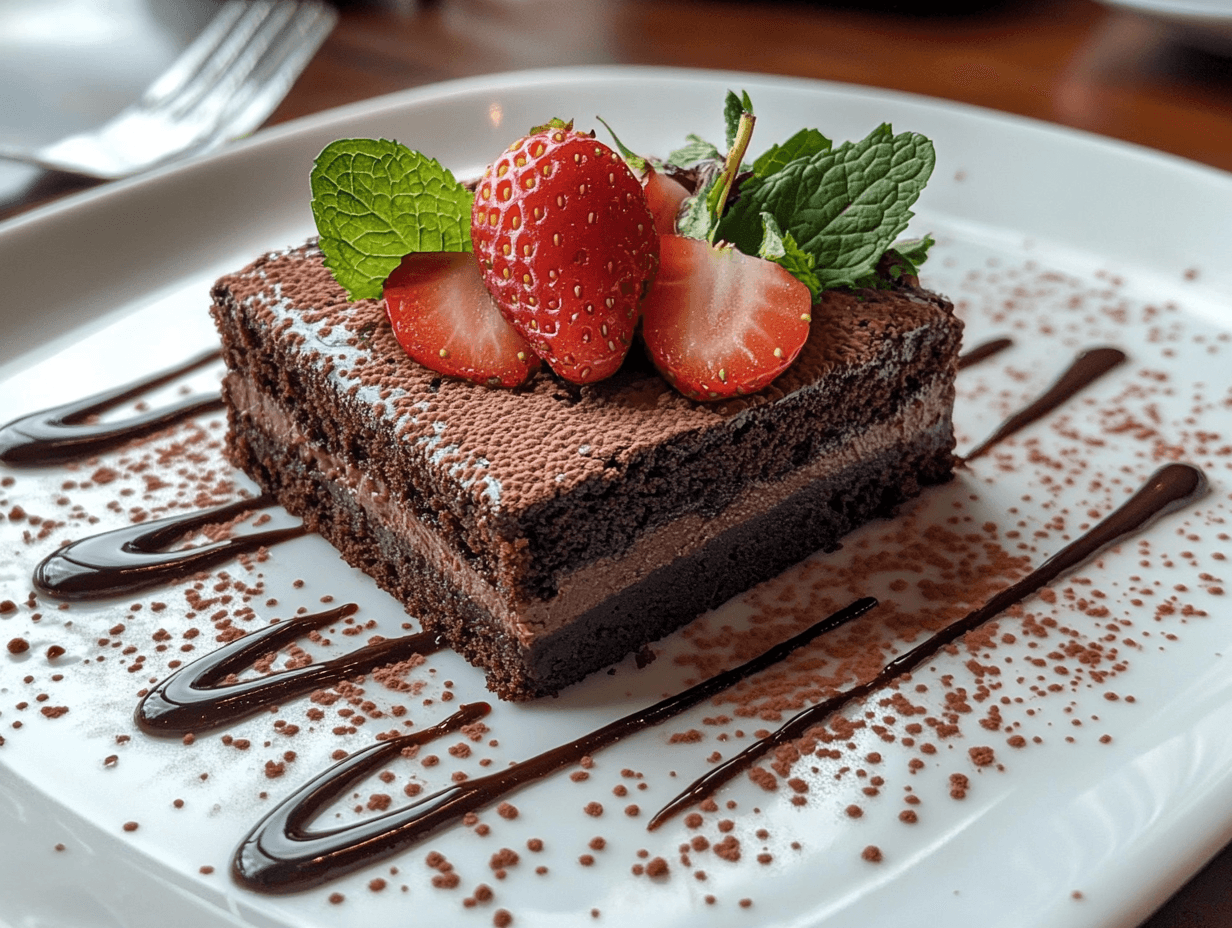Are brownies healthier than cake? This question sparks endless debates among dessert lovers. Both are delicious, satisfying, and perfect for different occasions, but when it comes to health, which one is truly the better choice? Whether you’re counting calories, watching your sugar intake, or just curious, understanding the nutritional differences between these two beloved treats can help you make smarter decisions. Let’s dive into the brownie vs. cake showdown and uncover the surprising facts you need to know.
Table of Contents
Introduction to the Debate
Why Do We Compare Brownies and Cake?
Brownies and cake are like dessert siblings—both loved, but always compared. While cake tends to be light, fluffy, and celebratory, brownies are dense, rich, and fudgy. They might seem similar because of their ingredients, but their texture and flavor couldn’t be more different.
But why compare them in terms of health? Well, both desserts are common party treats, and they’re often what we crave when we need something sweet. If you’re watching your diet or just trying to make healthier choices, you’ve probably asked yourself: “Which one’s better for me?”
The Popularity of Brownies and Cake
Let’s be real—both are crowd-pleasers. Cakes steal the show at birthdays, weddings, and celebrations, while brownies make for a more casual, snackable dessert. But while cake often screams extravagance with layers of frosting and decorations, brownies feel more “homemade,” like something you’d bake on a cozy weekend. Popularity-wise, they’re neck and neck, but what about nutrition?
Looking for the best frosting to complement a dessert without adding unnecessary calories? Take a look at How to Make the Perfect Chocolate Frosting for Brownies.
Nutritional Breakdown
Before diving into the numbers, let’s agree: neither brownies nor cake are health foods. But some desserts pack fewer calories and sugar than others. Here’s a closer look:
Calories in Brownies vs. Cake
“The calorie count often depends on serving size, but brownies are generally smaller and denser, meaning they might pack more calories per bite compared to cake.”
| Item | Calories (per 100g) |
|---|---|
| Brownie | 450 kcal |
| Cake (vanilla with frosting) | 350 kcal |
As you can see, brownies tend to have more calories. Why? Their dense texture comes from a higher fat and sugar content. Cake, on the other hand, is usually whipped with air, making it lighter and less calorie-dense (per gram).
Sugar Content in Brownies vs. Cake
Here’s where it gets interesting. Both desserts rely heavily on sugar for their sweetness, but brownies often have less frosting. Cakes, especially layered ones, can include frosting, fillings, and toppings that add to the sugar count. Let’s break it down:
| Item | Sugar (per 100g) |
|---|---|
| Brownie | 36g |
| Cake (vanilla with frosting) | 40g |
While brownies might win here, it’s a close race. You could say they’re “less bad,” but they’re definitely not sugar-free!
Fat and Protein Comparison
Brownies are typically higher in fat because they’re made with butter or oil to achieve that rich, fudgy texture. Cakes, however, often include milk or eggs, which can boost the protein content slightly but also contribute to fat.
| Nutrient | Brownie (per 100g) | Cake (per 100g) |
|---|---|---|
| Fat | 20g | 15g |
| Protein | 5g | 6g |
From a nutritional standpoint, the extra fat in brownies makes them more filling but also higher in calories. Cakes, on the other hand, are often less dense but may leave you craving more.
Carbohydrates and Fiber
Carbs are a big part of desserts, but fiber can help balance things out. Brownies, especially those made with dark chocolate or whole-grain flour, might have a slight edge here.
| Item | Carbohydrates (per 100g) | Fiber (per 100g) |
|---|---|---|
| Brownie | 52g | 2g |
| Cake (vanilla with frosting) | 55g | 1g |
So, if you’re looking for a slightly higher fiber option, brownies might come out on top—especially if they include add-ins like nuts or oats.

Common Ingredients and Their Impact
Key Ingredients in Brownies
Brownies are all about simplicity. Most recipes include just a handful of ingredients: flour, sugar, butter (or oil), eggs, and chocolate. The rich chocolate flavor often comes from cocoa powder or melted chocolate, and the butter or oil adds that gooey texture we all love.
Key Ingredients in Cake
Cake, on the other hand, is a bit more complex. It includes flour, sugar, eggs, and a fat source (like butter or oil), but it also relies on leavening agents like baking powder to give it that fluffy texture. Frosting, which is practically synonymous with cake, is usually made with powdered sugar and butter or cream.
The Role of Additives in Health
Both brownies and cakes can include additives—think food coloring, artificial flavorings, or preservatives in store-bought versions. These ingredients don’t add nutritional value and might even detract from the “healthiness” of the dessert. Homemade versions give you more control over what goes into your treat.
For example:
- Adding dark chocolate to brownies can boost antioxidants.
- Using whole-grain flour in cakes can increase fiber content.
Are Brownies Considered Healthier?
Healthier Options for Brownies
If you’re a brownie lover but worried about their health impact, don’t worry—you can easily tweak the recipe to make them more nutritious without losing that gooey, chocolatey goodness. How? Here are some simple swaps:
- Replace butter with coconut oil or unsweetened applesauce for fewer saturated fats.
- Use whole wheat flour or almond flour instead of all-purpose flour to add fiber and protein.
- Opt for dark chocolate (70% cocoa or higher) instead of milk chocolate for added antioxidants.
- Reduce the sugar by substituting natural sweeteners like maple syrup, honey, or stevia.
With these changes, your brownies can go from a guilty pleasure to a treat you can feel good about. Plus, they’ll still taste amazing—promise!
Situations Where Brownies Might Be Better
Now, when are brownies the better choice? If you’re looking for a dessert with a satisfying texture and richness that doesn’t rely on layers of frosting, brownies are the way to go. They’re also ideal for portion control. A single square can be more filling than a slice of cake because of its density.
Here’s a fun idea: Add some healthy toppings like walnuts, chia seeds, or a sprinkle of sea salt to elevate your brownies while adding some extra nutrients.
Are Cakes Considered Healthier?
Cakes That Use Healthier Ingredients
Cakes can be lightened up too! Here are some smart ingredient swaps to make your cake healthier without sacrificing flavor:
- Use Greek yogurt or mashed bananas instead of heavy cream in the batter.
- Swap refined sugar for natural alternatives like coconut sugar or honey.
- Go for a frosting alternative, like whipped Greek yogurt mixed with a touch of vanilla and honey, instead of traditional buttercream.
For those who love fruity flavors, incorporating fruits like berries or citrus zest can make cakes feel fresher and less heavy.
Scenarios Where Cake Is a Better Choice
Cakes shine when you need to serve a crowd or create a show-stopping dessert. Their versatility in flavors, from vanilla and chocolate to red velvet and lemon, makes them a crowd favorite. If you’re hosting a birthday or celebration, cake takes the spotlight.
“Cakes are great for large gatherings and when you want a dessert that feels indulgent but doesn’t have to be overly dense.”
Common Problems in Making Healthier Choices
Misconceptions About Portion Sizes
One of the biggest traps with desserts is portion size. A slice of cake can easily become oversized, and the same goes for brownies. It’s easy to think, “Oh, it’s just one piece,” but those calories add up quickly!
Here’s a quick guide to portion control:
| Dessert | Recommended Portion | Calories |
|---|---|---|
| Brownie | 1 square (2×2 inches) | 150-200 kcal |
| Cake | 1 slice (1/12 of an 8-inch round cake) | 250-300 kcal |
Stick to these serving sizes, and you’ll enjoy your dessert guilt-free!
Balancing Taste and Nutrition
Another common problem? Balancing health-conscious ingredients with flavor. Let’s face it—nobody wants a dry brownie or bland cake, no matter how healthy it is. The trick is to use high-quality, flavorful ingredients.
For example:
- In brownies, adding a touch of espresso powder enhances the chocolate flavor without adding sugar.
- In cakes, using fresh fruit or spices like cinnamon can create depth without extra calories.

Solutions for Healthier Baking
Substituting Sugar and Butter
One of the easiest ways to make brownies and cakes healthier is by cutting back on sugar and butter. You can replace up to half of the sugar in most recipes with natural alternatives like dates, maple syrup, or mashed bananas. As for butter, try using Greek yogurt, avocado, or unsweetened applesauce.
Adding Nutrient-Dense Ingredients
Want to sneak in some extra nutrition? Add nutrient-dense ingredients like:
- Nuts: Almonds, walnuts, or pecans add crunch and healthy fats.
- Seeds: Chia seeds or flaxseeds boost omega-3s and fiber.
- Vegetables: Yes, you read that right! Shredded zucchini or pureed sweet potato can add moisture and nutrients without changing the flavor.
Portion Control Tips
Feeling tempted to eat half the tray of brownies or a giant slice of cake? Here are some tips to keep portions in check:
- Use smaller baking pans to create thinner layers or smaller squares.
- Cut your dessert into bite-sized pieces for easier portioning.
- Pair your dessert with a side of fruit or yogurt to make it feel more filling.
Expert Opinions
What Nutritionists Say About Brownies
Many nutritionists agree that brownies can be part of a balanced diet if you choose the right recipe and enjoy them in moderation. They recommend going for versions made with dark chocolate and whole grains to maximize nutrients.
Dietitians’ Views on Cake
When it comes to cake, dietitians often emphasize the importance of portion control and choosing lighter options. A fruit-topped sponge cake, for example, is often a better choice than a triple-layer chocolate cake with buttercream frosting.
When choosing between brownies and cake, the decision often comes down to the recipe and portion size. For a deeper dive into crafting healthier brownies, check out The Ultimate Guide to Chocolate Brownie with Almond Meal.
Tips for Healthier Choices
Choosing Ingredients Wisely
The key to making healthier brownies or cakes is all in the ingredients. Think of your kitchen as your toolbox, and every ingredient as a tool. Choose tools that add value to your dessert. For instance:
- Instead of white flour, use almond flour or oat flour. They’re packed with fiber and protein!
- Replace regular chocolate chips with dark chocolate chunks or cacao nibs to reduce sugar while boosting antioxidants.
- When adding sweetness, go for natural sweeteners like honey, maple syrup, or coconut sugar. They’re less processed and have trace nutrients.
Keep in mind that even small ingredient swaps can make a big difference. You’ll feel better knowing your dessert isn’t just a sugar bomb but has some nutritional value, too.
Reading Labels When Buying Premade Options
If baking isn’t your thing, you’re probably buying premade brownies or cakes from the store. That’s totally fine, but you’ll need to do some detective work. Flip the package over and check the label. What should you look for?
- Sugar content: Try to keep it under 20g per serving.
- Fats: Avoid trans fats and look for healthier fats like coconut oil.
- Preservatives: The fewer, the better. Stick with products that have ingredients you can pronounce!
“When in doubt, choose brands that focus on whole, organic ingredients. They might cost a little more, but your body will thank you.”
Moderation Is Key
Let’s be honest—whether you’re team brownie or team cake, indulging every now and then is totally fine. The key is moderation. One brownie or one slice of cake isn’t going to derail your health goals, but eating half a tray or the whole cake? That’s another story.
A great tip? Savor every bite. Eat slowly, and let your taste buds enjoy the flavors. You’ll feel more satisfied and less tempted to go back for seconds (or thirds).
Which Is Healthier? Final Verdict
Contextual Factors to Consider
The answer to “Are brownies healthier than cake?” isn’t black and white—it depends! Here are some factors to keep in mind:
- Ingredients: A brownie made with whole-grain flour and dark chocolate might be healthier than a cake loaded with frosting and food coloring.
- Portion size: A small piece of cake can be healthier than a large, calorie-dense brownie.
- Your goals: Are you looking for a treat to satisfy a sweet craving, or are you trying to pack in some nutrients? Your choice might depend on what you prioritize.
Conclusion: It’s a Matter of Preference
So, which is healthier? The truth is, both brownies and cake can fit into a balanced diet when enjoyed in moderation. The healthier option really depends on how they’re made and how much you eat.
If you’re craving something rich and indulgent, a small, nutrient-packed brownie could be your go-to. If you’re in the mood for something light and celebratory, a slice of healthier cake with fresh fruit might be the winner. Either way, the choice is yours!
“At the end of the day, the healthiest dessert is the one that brings you joy without overindulgence. Life’s too short to skip dessert entirely, right?”
So, are you team brownie or team cake? Whichever you choose, just remember that a little sweetness can go a long way. Happy indulging!
Healthier Alternatives: Brownies made with almond flour can offer a lower-carb option, as detailed in Can I Use Almond Flour Instead of All-Purpose Flour for Brownies?.

Healthier Brownies
Equipment
- Mixing Bowl
- Oven
- Baking Dish
Ingredients
Healthier Brownie Base
- 1/2 cup unsweetened applesauce as butter substitute
- 1/2 cup natural sweetener like maple syrup or honey
- 2 eggs
- 1/2 cup unsweetened cocoa powder
- 1/4 cup almond flour
- 1 tsp vanilla extract
- 1/4 tsp salt
- 1/4 cup dark chocolate chips optional
Instructions
- Preheat oven to 350°F (175°C). Grease or line an 8×8-inch baking dish.
- In a mixing bowl, combine applesauce, sweetener, eggs, and vanilla extract. Mix well.
- Add cocoa powder, almond flour, and salt. Mix until fully blended. Fold in chocolate chips if using.
- Pour batter into the prepared dish. Bake for 20–25 minutes or until set in the center.
- Let cool before slicing into squares.

